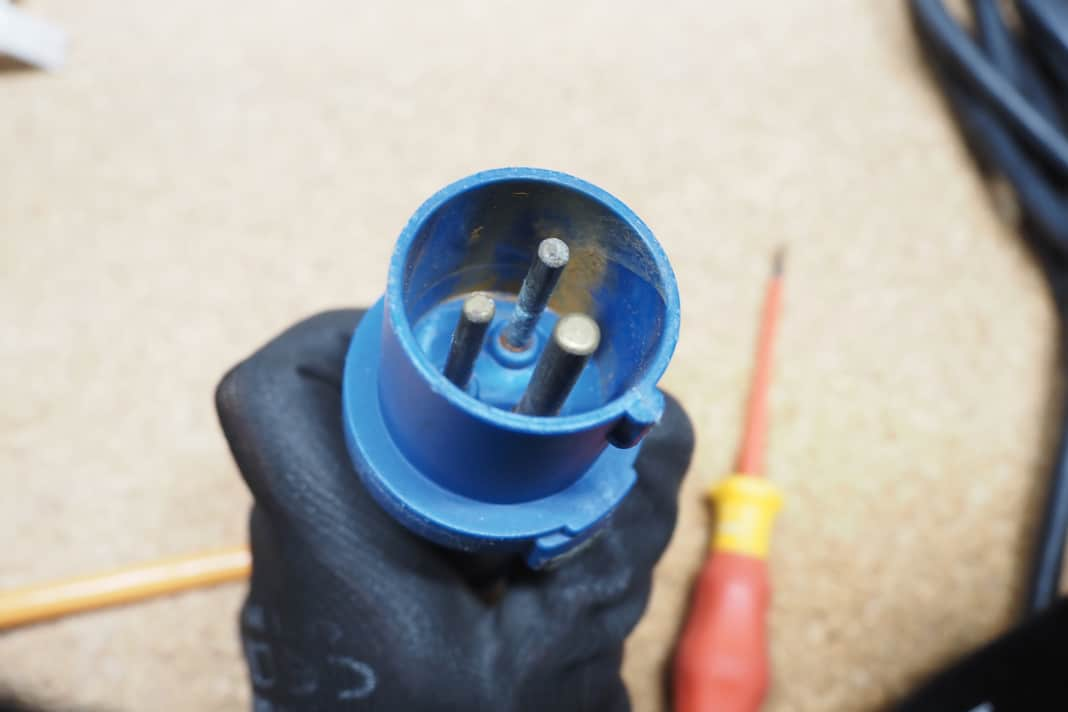Safety: Selection and use of shore power cables - what you should bear in mind
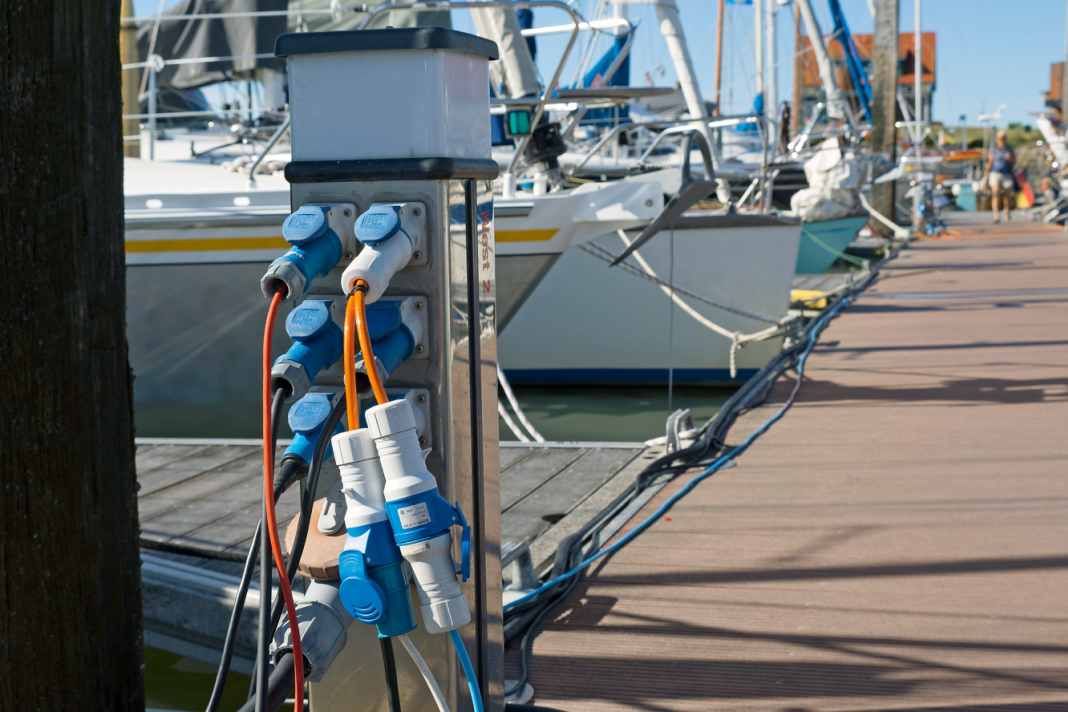


- Adapter and distributor for the shore power cable
- Correctly dimension shore power cables
- Safe shore power cable: rubber or PUR cable
- Which plug connection for the shore connection?
- Explanation in pictures: Cables and plug connections
- Explanation in pictures: Stowing the shore power cable
- Explanation in pictures: Adapters for shore power cables are not a permanent solution
- In the event of corrosion: Replace the shore power cable immediately!
Hardly any yacht can manage permanently without 230 volts. Whether for recharging the on-board batteries, for the smartphone and tablet, the boiler, the kettle or even for the induction hob or microwave - the shore power connection brings convenience on board and is sometimes a reason to opt for the marina instead of the anchorage.
We have already explained what you need to consider when installing a 230-volt on-board power supply. here described. However, even if the standard-compliant installation is already in place, the electricity must also get from the jetty to the ship. The shore power cable is often forgotten. Yet it is literally the system's power source and has a decisive influence on the safety of the installation.
On the shore side, i.e. on the jetty, the power connection is regulated by the VDE 0100-709 standard. This should make it clear that a so-called CEE socket (blue) is available in the harbour, in a quantity corresponding to the number of berths, as only one boat may be connected to each socket - so much for the theory.
Adapter and distributor for the shore power cable
In practice, as we all know, things look different. At the latest when the harbour is full of small parcels, the power columns become cramped and the time has come for adapters and distributors. Especially as you can still find Schuko or other country-specific plug connections at some harbours. Regardless of the regulations, the adapter harbours several risks. Firstly, the system is no longer protected against polarity reversal, i.e. phase and neutral conductors can be reversed. With correct on-board installation, this is not a problem in normal operation, as all household appliances have such a plug.
It becomes critical when several shore power cables are used at the same time, for example to operate the boiler and on-board air conditioning system. Although the circuits must be separated from each other, the risk of galvanic corrosion increases. On the other hand, Schuko plugs have a much smaller contact surface than CEE couplings, so they are more susceptible to increased contact resistance with increasing age.
In the worst-case scenario, the corroded plug will coke as soon as the boiler's heating cartridge starts up or the kettle goes into operation.
Correctly dimension shore power cables
Resistance plays a decisive role in the dimensioning of the shore power cable. It strikes twice, firstly directly in the form of the voltage drop, which increases with the resistance and the current, and secondly as a current limiter.
If the cable is too long or too thin, the full 230 volts will no longer be available at the end. According to the standard, only four per cent of the voltage may be lost. This is calculated using the current corresponding to the fuse protection. As a rule, this means 16 amps, which results in a maximum length of around 17 metres for a cable with a cross-section of 1.5 square millimetres. A 2.5 mm cable should be 28 metres long. The lower fuse ratings of six or ten amps that are common in many harbours result in longer lengths.
Safety comes first
However, most devices used on board are not affected by a low input voltage. The resistance of the cable can be more problematic for the function of the safety devices. Circuit breakers have two tripping systems. An inert, thermal one to protect against cable overload and a magnetic one to detect short circuits. It reacts quickly, but requires a much higher current. If the resistance on the path from the fuse to the faulty consumer is too high, the current flow is limited and the fuses trip with a delay, increasing the risk of electric shock.
Additional plug connections, distributors or adapters can become a problem. Their transition resistances are added to the cable. However, as they are heavily dependent on the condition of the contacts, they are almost impossible to predict.
If the power column is equipped with residual current devices (RCDs) in accordance with the standards and these work, there is no direct danger to life even if the cable is too long, as the RCD would trip even if the current flow is low. However, it does not protect against a short circuit and the associated fire hazard. For this reason, no other plug connections are permitted on the route from the power column to the boat.
The right cross-section
To be on the safe side, a cross-section of 1.5 square millimetres is sufficient up to a length of 15 metres. From 25 metres, cables with a cross-section of 2.5 square millimetres must be used. There is no explicit maximum length for yachts, as there is on campsites.
If the shore power takeover is installed at the stern and the cable first has to be routed to the bow, ten or more metres can easily be lost. A second connection at the bow is therefore recommended for larger yachts. This requires a changeover unit so that the unused contacts cannot carry any voltage. Suitable systems are available from Philippi, both for manual switching and with automatic voltage detection.
Safe shore power cable: rubber or PUR cable
The required material is a three-core rubber hose cable, the type designation is H07RN-F. Alternatively, PUR cables of type H07BQ-F can also be used. These cables, also known colloquially as construction site cables, are mechanically even more robust and have a smoother surface, which means that less dirt sticks to them. The insulation is also thinner with the same cable cross-section. Longer cables can therefore be wound up smaller. Good for on-board use.
Side effect: The polyurethane sheathing is usually coloured orange, which makes the cable easier to see on the bar and thus reduces the risk of tripping. Depending on the manufacturer, yellow, blue or green cables are also available. The Lower Saxony-based supplier "Kalle das Kabel" also offers customised cables, for example with the ship's name.
Which plug connection for the shore connection?
The plug connections are clearly regulated by the standards. As a CEE installation socket is prescribed on land, the cable must have the appropriate CEE plug. A coupling is also required on the side of the boat so that no live contacts are exposed. "The plug connection on the boat was previously not clearly defined and was a grey area," says Michael Kögel from Philippi. The ISO 13297 recreational craft directive now specifies a plug connector with IP65 or higher for shore power transfer.
In the simplest versions, the built-in plugs are only fitted with a cover and may only be used in the back box or in other places protected from water and weather. Philippi offers watertight sealable versions together with the matching screwable couplings.
Ratio's CEE-style plug system is specially designed for use on board. The socket and plug are protected by caps and are watertight even when connected. However, it should be noted that although the built-in plug has the same contacts as a CEE plug, it is only compatible with Ratio sockets. The boat and cable must therefore both be converted.
Victron Energy and Mastervolt also rely on the Ratio material. Both manufacturers sell the system under their own name. There is also the American system from Marinco. The plugs and sockets of this system can also be sealed watertight. The round plug connector sold by Philippi, which is also waterproof, is particularly compact. However, it has significantly smaller contact surfaces than a CEE connection.
Regardless of which plug system is used, the connection to the boat should always be established first and disconnected last before the cable is connected to or disconnected from the power column. In addition, all 230-volt consumers should be switched off beforehand.
Explanation in pictures: Cables and plug connections
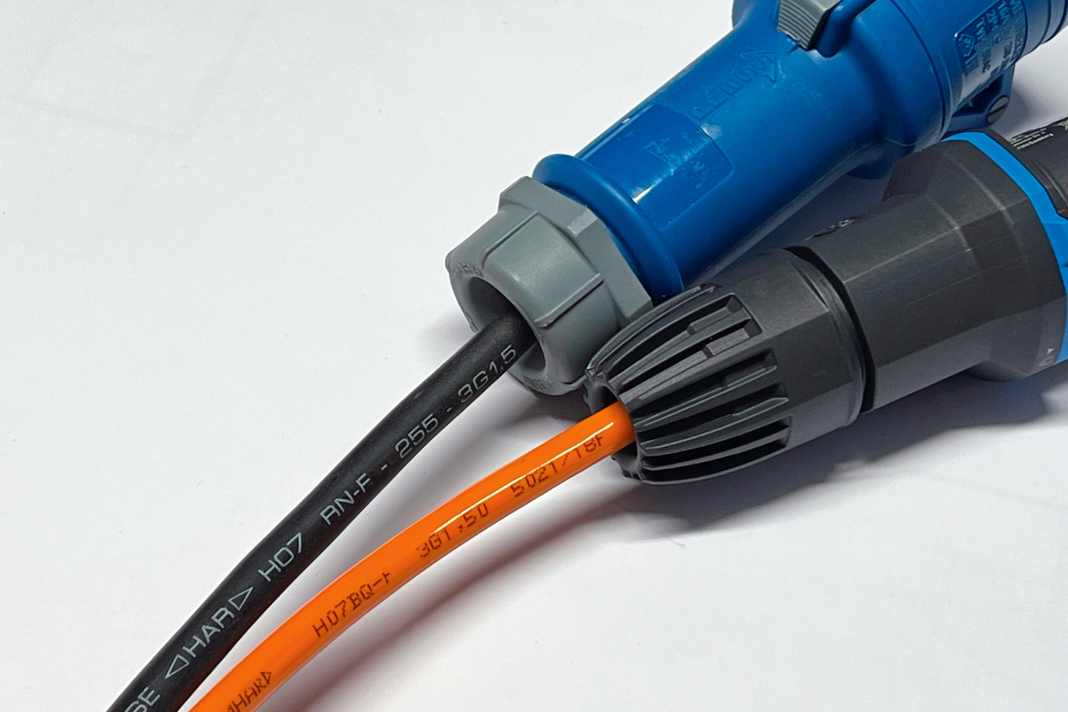





Explanation in pictures: Stowing the shore power cable
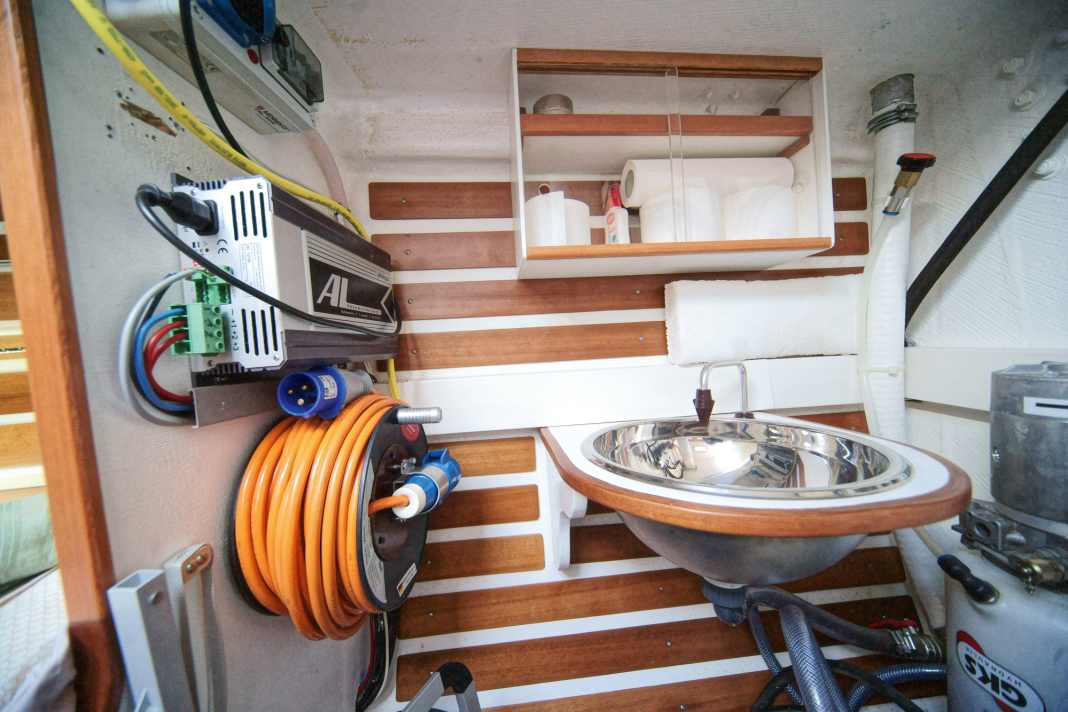





Explanation in pictures: Adapters for shore power cables are not a permanent solution
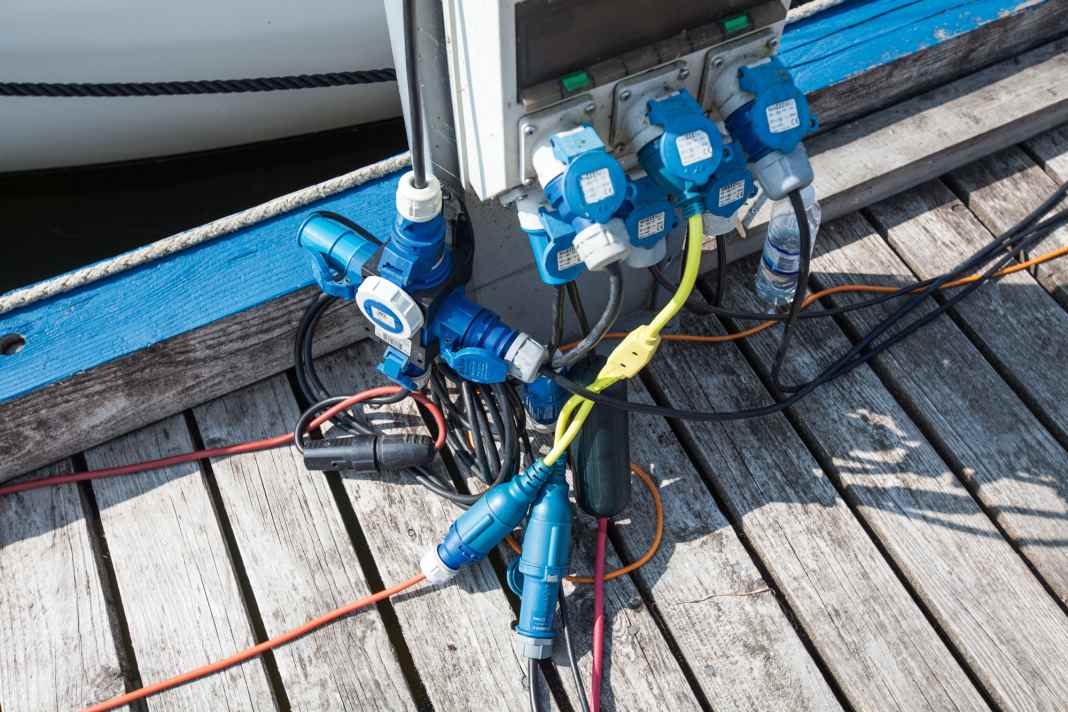


In the event of corrosion: Replace the shore power cable immediately!
